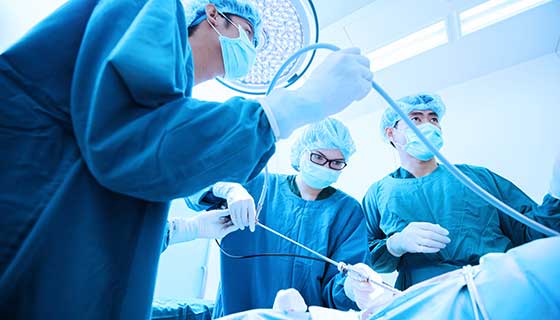The Current Technologies by the Best Spine Surgeons in St Louis MO
The Current Technologies by the Best Spine Surgeons in St Louis MO
Blog Article
An Introduction of Spine Problems That Usually Lead To Surgical Treatments
When conventional treatments stop working to reduce persistent symptoms,Spine conditions such as herniated discs, spine constriction, and degenerative disc disease frequently require surgical interventions. These problems not just cause considerable discomfort however can likewise badly hinder daily functioning and total lifestyle. Comprehending the subtleties of each problem and the equivalent medical choices, such as discectomy or back blend, is essential for effective management. As we discover these problems further, it ends up being noticeable that the decision-making procedure surrounding medical therapy is diverse and warrants careful factor to consider.
Herniated Discs
Although several individuals with herniated discs may discover relief via conventional treatments, surgery becomes a necessary consideration when signs persist or get worse - best spine surgeons in st louis mo. A herniated disc occurs when the soft internal gel of a back disc protrudes with its external layer, possibly leading and pressing close-by nerves to discomfort, tingling, or weakness in the extremities
Conservative monitoring typically includes physical treatment, discomfort medications, and corticosteroid injections, which intend to minimize swelling and enhance function. Nevertheless, in situations where these methods stop working to relieve incapacitating symptoms, surgical choices may be checked out.
The most common surgical treatment for herniated discs is a discectomy, which entails the removal of the herniated part of the disc to relieve pressure on the affected nerve root. In more extreme cases, spine combination may be essential to stabilize the affected vertebrae.
Patients are recommended to discuss the potential dangers and benefits of surgical procedure with their doctor to make an educated decision. Eventually, the goal of any type of medical treatment is to bring back function, reduce discomfort, and improve overall quality of life for individuals struggling with herniated discs.
Back Stenosis
Spinal constriction occurs when the rooms within the spine slim, leading to raised stress on the spine and nerves. This problem can establish in various regions of the spinal column, including the back and cervical locations, typically because of age-related modifications, such as degenerative disc illness, arthritis, or thickening of ligaments.
People with spinal constriction might offer with signs and symptoms that consist of pain, pins and needles, tingling, or weakness, primarily in the arms or legs. These symptoms can be exacerbated by tasks that entail standing or walking, frequently leading people to look for relief via conservative therapies like physical therapy, medicines, or epidural steroid shots.
However, when these non-surgical treatments fall short to provide sufficient alleviation, surgical choices might be taken into consideration. Typical medical procedures for spine constriction include laminectomy, which involves the removal of part of the vertebra to alleviate pressure, and spinal blend, which stabilizes More Info the afflicted location.
Spondylolisthesis
Spondylolisthesis takes place when one vertebra slides forward over an additional, leading to imbalance of the back. This condition can result from different aspects, consisting of congenital flaws, injury, or degenerative adjustments in the back. It is most commonly observed in the back area, particularly at the L4-L5 and L5-S1 levels.

When non-surgical approaches Visit This Link stop working to alleviate symptoms or when substantial nerve compression is present, medical intervention may be necessitated. Surgical choices can include spine blend or decompression procedures, aimed at bring back positioning and reducing neurological signs.
Degenerative Disc Disease

The condition can be detected through a combination of clinical examination, imaging studies, and patient history. When these approaches fail to give adequate relief, medical interventions might be taken into consideration.
Surgical alternatives for DDD might consist of spinal combination or man-made disc substitute, intended at stabilizing the influenced section and easing pain (best spine surgeons in st louis mo). Ultimately, the selection of treatment is embellished, considering the extent of the condition, individual health, and way of living variables
Spine Growths

Back lumps can emerge from different elements, consisting of hereditary tendency, ecological influences, and pre-existing medical conditions. Individuals might present with an array of symptoms, consisting of local discomfort, neurological shortages, weak point, or adjustments in bowel and bladder feature, depending on the tumor's size and area.
Diagnosis generally involves imaging studies such as MRI or CT checks, which assist mark the tumor's characteristics and my response influence on surrounding frameworks. In examining therapy options, the tumor's grade, area, and type are crucial factors to consider. Surgical treatment might be called for to alleviate signs, obtain a biopsy, or get rid of the tumor entirely. The goal of surgery is commonly to unwind neural aspects and support the back. Adjuvant therapies, including radiation or chemotherapy, may likewise be essential depending upon the tumor's nature. Early detection and treatment are vital for enhancing end results in patients with back growths.
Final Thought
In recap, spinal column conditions such as herniated discs, spine constriction, spondylolisthesis, degenerative disc condition, and spine growths frequently demand medical treatment because of their possible to cause significant pain and functional problems. While conventional therapies might supply temporary relief, surgical alternatives become crucial when symptoms aggravate or continue. Timely diagnosis and treatment play a vital role in restoring feature and improving the lifestyle for affected individuals, highlighting the relevance of thorough spine treatment.

Report this page